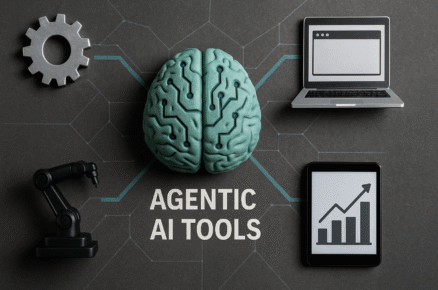In an era where information is currency and time is short, Google AI Mode is stepping into the spotlight as a game-changing feature in the evolution of search. Designed to provide users with instant, contextually rich answers, this new approach to search aligns with the broader trend of Search Generative Experience (SGE) – an innovation that combines traditional web crawling with AI-powered insights. But does this mark the end of classic search as we know it? In this article, we take a deep dive into Google AI Mode: what it is, how it works, who benefits, and whether it truly represents the future of digital discovery.
What is Google AI Mode?
Google AI Mode refers to the generative search capability that integrates artificial intelligence into search engine results pages (SERPs). Instead of simply listing links based on keywords, this mode generates summarised responses, insights, and overviews directly in the search results.
When users activate Google AI Mode, they gain access to:
-
AI-powered summaries of complex queries
-
Conversational follow-up prompts
-
Context-aware answers using large language models (LLMs)
-
Snippets drawn from diverse sources (websites, reviews, academic content)
This approach mirrors the style of tools like ChatGPT but remains embedded within the Google Search ecosystem – ensuring that generative results are supplemented by traditional search links.
Understanding the Search Generative Experience (SGE)
The Search Generative Experience is Google’s flagship attempt to merge generative AI with search. It focuses on surfacing insights in seconds, using generative language models (such as Gemini) to create human-like summaries of the best available information.
Key components of SGE:
-
Multimodal input: Users can search using text, voice, and images
-
Dynamic results: Summaries change based on user refinement
-
Trust signals: Citations to original content are included
-
AI overviews: Available in Google AI Mode for certain searches
Unlike traditional search, which required users to click through links to compare and analyse content manually, SGE through Google AI Mode distils the core information and presents it in a readable, conversational form at the top of the page.
Why Google AI Mode Matters
Google has always focused on organising the world’s information – but the volume of online content has exploded. Google AI Mode helps solve some of the modern user’s biggest pain points:
-
Overwhelm from too many results
-
Time-consuming research
-
Complexity of understanding nuanced topics
AI-powered summaries deliver clarity, especially for questions like:
-
“Which phone is better for low-light photography?”
-
“What are the pros and cons of remote work?”
-
“How can small businesses use CRM software in 2025?”
With Google AI Mode, answers come fast, grounded in authoritative sources, and easy to digest – without needing to sift through multiple tabs.
Key Features of Google AI Mode
-
AI Overviews
AI-generated summaries that answer your question instantly, with sources linked below. -
Follow-up Questions
A chat-style interface allows users to continue refining their query, much like a conversation. -
Cited Sources
AI answers link back to reputable web pages, helping users verify the information. -
Shopping Recommendations
For commercial queries, it includes product comparisons, reviews, and deals – all summarised. -
Educational Assistance
Google AI Mode is proving helpful in explaining scientific, mathematical, and technical concepts to learners at all levels.
Real-World Examples of Google AI Mode in Action
Example 1: Health Queries
Instead of linking to forums and articles, Google AI Mode provides a clear summary of symptoms, potential causes, and when to seek help – backed by reputable sources like the NHS or Mayo Clinic.
Example 2: Travel Planning
Ask “3-day itinerary in Lisbon” and you’ll receive a suggested itinerary, activities, and packing tips – all in a well-organised block with the option to expand further.
Example 3: Small Business Research
Entrepreneurs can search for “best POS systems for cafes” and receive tailored AI responses including pros, cons, and pricing – all summarised from top review sites.
How Google AI Mode Impacts SEO and Content Strategy
One of the biggest shifts Google AI Mode introduces is the reduced visibility of organic links in favour of generative summaries. While this improves user experience, it challenges traditional SEO strategies.
What This Means for Marketers and Publishers:
-
E-E-A-T (Experience, Expertise, Authoritativeness, Trustworthiness) is more critical than ever
-
Structured data and schema markup can help content get surfaced in AI responses
-
Long-form, informative content with clear headings improves inclusion in generative overviews
-
Branding and reputation will influence whether your site is cited
Marketers now need to optimise for AI visibility – not just for the top 10 links on a SERP.
Is Google AI Mode Always Accurate?
No AI is perfect, and Google AI Mode is no exception. Google has implemented safeguards, such as content filters and fact-checking algorithms, but:
-
It can occasionally hallucinate facts
-
Some responses may lack nuance or regional accuracy
-
Not all industries (like finance or law) are fully integrated into AI overviews
However, Google continues to test and improve its systems, and user feedback is used to refine outputs in real time.
Ethical Concerns and Content Ownership
The rise of Google AI Mode raises valid concerns, including:
-
Fair use of content: Publishers worry that their information is summarised without traffic returning to their site
-
Misinformation: If AI misinterprets sources, the error is magnified
-
Plagiarism and attribution: Even with citations, the summarised nature could reduce user clicks
To address this, Google has committed to:
-
Linking visibly to cited sources
-
Allowing publishers to opt out via
robots.txtfrom being used for AI summaries -
Sharing updates transparently with webmasters
Google AI Mode and Education
For students and educators, Google AI Mode is a breakthrough:
-
Summarises academic articles for easier comprehension
-
Explains tough concepts (like quantum mechanics or economic models)
-
Suggests follow-up study resources
However, educators should also guide students to cross-reference, as relying solely on AI-generated summaries might limit depth of understanding.
Business Applications: Why SMEs Should Pay Attention
Small and medium businesses (SMEs) can benefit significantly from Google AI Mode:
-
Faster research: Competitor analysis and trend monitoring becomes quicker
-
Customer insight: Understanding what users are searching helps shape content and ads
-
Visibility: AI citations could boost brand authority if your content is well-structured
To stay ahead, SMEs should:
-
Regularly audit website content for clarity and authority
-
Create FAQ-style content that AI can easily summarise
-
Use natural language in blogs and product descriptions
Limitations and Future Roadmap
Despite its potential, Google AI Mode is still evolving.
Current Limitations:
-
Limited rollout (not available in all countries)
-
Inconsistent appearance based on query type
-
No user control over toggling AI summaries on/off in some regions
What’s Coming:
-
Better personalisation: AI responses tailored to your search history and preferences
-
Multilingual support: Expanding AI summaries across global languages
-
Integration with other services: Google Docs, YouTube, Gmail
Google’s long-term vision is a fully conversational search engine – where users no longer “search” but simply “ask”.
Is Google AI Mode the Future of Search?
Short answer: Yes – but not alone.
While Google AI Mode is a major leap forward, traditional search still has a place. People still want lists, links, forums, and the ability to explore diverse viewpoints. However, AI-powered summaries will likely become the default front-end of search – especially for mobile, voice, and smart device users.
Search is becoming more intelligent, contextual, and conversational. And as Google perfects its AI models and expands the rollout of generative experiences, the way people interact with the internet is changing permanently.
Google AI Mode is not just a feature – it’s a signal of where the internet is heading. With its ability to generate fast, informative, and engaging answers, it caters to the modern user’s needs more effectively than traditional search ever could.
Whether you’re a student, a parent, a business owner, or a content creator, understanding and adapting to this shift is no longer optional – it’s essential.
As we move forward, those who master the dynamics of AI-powered search will be the ones who thrive in the digital landscape of tomorrow.












Comments are closed.